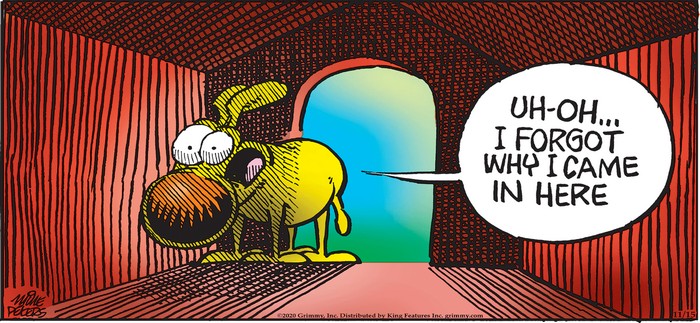 ∙New study highlights need for consistency in diagnosing and treating epilepsy in dogs. A study led by the Royal Veterinary College’s Vet Compass program has revealed a significant difference between how clinicians diagnose epilepsy compared with current expert recommendations, supporting a call for clearer diagnostic guidelines for greater consistency of diagnosis and treatment in clinical practice.
∙New study highlights need for consistency in diagnosing and treating epilepsy in dogs. A study led by the Royal Veterinary College’s Vet Compass program has revealed a significant difference between how clinicians diagnose epilepsy compared with current expert recommendations, supporting a call for clearer diagnostic guidelines for greater consistency of diagnosis and treatment in clinical practice.
For the study, 2,834 seizure incident cases were identified from a population of 455,553 dogs attending VetCompass participating practices in 2013.
The study found that that approximately 1 in 160 dogs under first opinion veterinary care are affected by seizures every year.
Many of those dogs will have underlying epilepsy, defined as dogs with two or more unprovoked seizures at least 24 hours apart. Seizures can be secondary to idiopathic epilepsy, structural epilepsy or epilepsy of unknown cause.
Until now, however, there has been little information on the classifications of seizures, diagnostic approaches, or clinical management of dogs with seizures in the veterinary first opinion population.
The main findings from the research were:
The annual incidence risk of seizures in dogs was 0.62%.
The most common breeds among seizure cases were Labrador Retrievers (8.6%), Staffordshire Bull Terriers (6.1%), Jack Russell Terriers (5.8%) and Yorkshire Terriers (5.0%).
579 (20.5%) seizure cases met the criteria for epilepsy based on the International Veterinary Epilepsy Task Force (IVETF) classification system, compared with just 245 (8.6%) that were formally recorded with epilepsy by the attending veterinary teams.
Overall, 1,415 (49.9%) cases received diagnostic evaluation equivalent to or higher than IVETF Tier 1 diagnostic testing.
Dr Dan O’Neill, Senior Lecturer in Companion Animals Epidemiology at the RVC, and author of the paper, said: “Watching your dog undergo a seizure can be an incredibly scary moment for any dog owner. It is really important that dogs that seizure are rapidly diagnosed to decide whether they need no further treatment beyond careful monitoring or alternatively require a clinical work-up to define the cause of the seizures.
“There are now some excellent treatments for many seizure-related diseases. This study helps up to understand the current state of play for seizure management in dogs and identifies opportunities for improved care of these affected dogs.”
∙While there are parts of a dog’s mind that are alien, there are also parts that feel very familiar. Chances are, your dog occupies a special place in your heart. Recent research suggests your dog feels the same way about you. Your dog adores you.
Dogs attach to their owners in much the same way human infants attach to their parents. Like babies, dogs show distress when left with a stranger and rush to reunite upon their person’s return.
A recent study found that dogs that have been deprived of food and owners choose to greet their owners before eating. Further, their brain’s reward centers “light up” upon smelling their owners. And, when your eyes meet your dog’s, both your brains release oxytocin, also know as the “cuddle hormone.”
All of this research shows that you can make your dog happier with just one ingredient: you. Make more eye contact to release that cuddle hormone. Touch it more — dogs like pats better than treats. Go ahead and “baby talk” to your dog
∙By Ellen Furlong
I have discovered one positive amid the pandemic: I love working with two dogs at my feet.
As someone who studies dog cognition, I often wonder: What is Charlie learning when he stops to sniff the crisp fall air? What is Cleo thinking when she stares at me while I write? Are my dogs happy?
I’m not alone in finding myself suddenly spending more time with my pups and contemplating what’s on their minds. More people in the United States are working from home now than are working in the workplace, and many now share home offices with their canine companions. What’s more, many are finding their lives enriched with the addition of a new pet, as people started adopting dogs at massive rates during the pandemic.
What makes dogs so special and successful? Love.
This uptick in dog time means I have been fielding questions from new and experienced dog owners alike about their companions’ mentalities. Many questions center on the same themes I ponder: What is my dog thinking? Am I doing everything I can to ensure my pup is content?
Fortunately, research on dog cognition can help unravel what is on their minds and provide insight into what they need for psychologically fulfilling and happy lives.
Dogs are both familiar and yet fascinatingly alien. To appreciate their “otherness,” all you need to do is consider their sensory world.
My dogs and I have very different experiences when we walk a trail. I marvel at the beautiful autumn day, but my dogs have their heads to the ground, seemingly ignoring the wonders around them.
But they are appreciating something I can’t perceive: the scent of the fox who scampered through last night, the lingering odor of the dogs who’ve walked this way and the foot steps of my neighbor, who last wore her hiking shoes in woods my dogs have never visited.
Can dogs detect the coronavirus?
You’ve probably heard about dogs who sniff out cancer, weapons or even coronavirus. These dogs are not special in their nose power: Your dog could do the same thing.
The first dog to sniff out cancer sniffed a mole on his owner’s leg so frequently that she went to the dermatologist, where she was diagnosed with melanoma.
A dog’s sense of smell is estimated to be 10,000 to 100,000 times better than that of a human. In large part, this is due to staggering differences in odor processing in humans and dogs.
While we have about 6 million olfactory receptors, dogs have a staggering 300 million. Their epithelium, or nasal tissue, is about 30 times larger than ours. And while people have between 12 million and 40 million olfactory neurons — specialized cells involved in transmitting odor information to the brain — dogs, depending on the breed, can have 220 million to 2 billion.
How can you even conceptualize this breathtaking difference in abilities? This disparity is like detecting one teaspoon of sugar in enough water to fill two Olympic-size swimming pools.
Now that your mind has been blown about your dog’s incredible sense of smell, you can use this information to make your dog happier by taking it on the occasional “sniffy walk” — letting it lead the way and take as much time to smell as it would like. Such walks can make dogs happier by allowing them to gain lots of information about the world around them.


